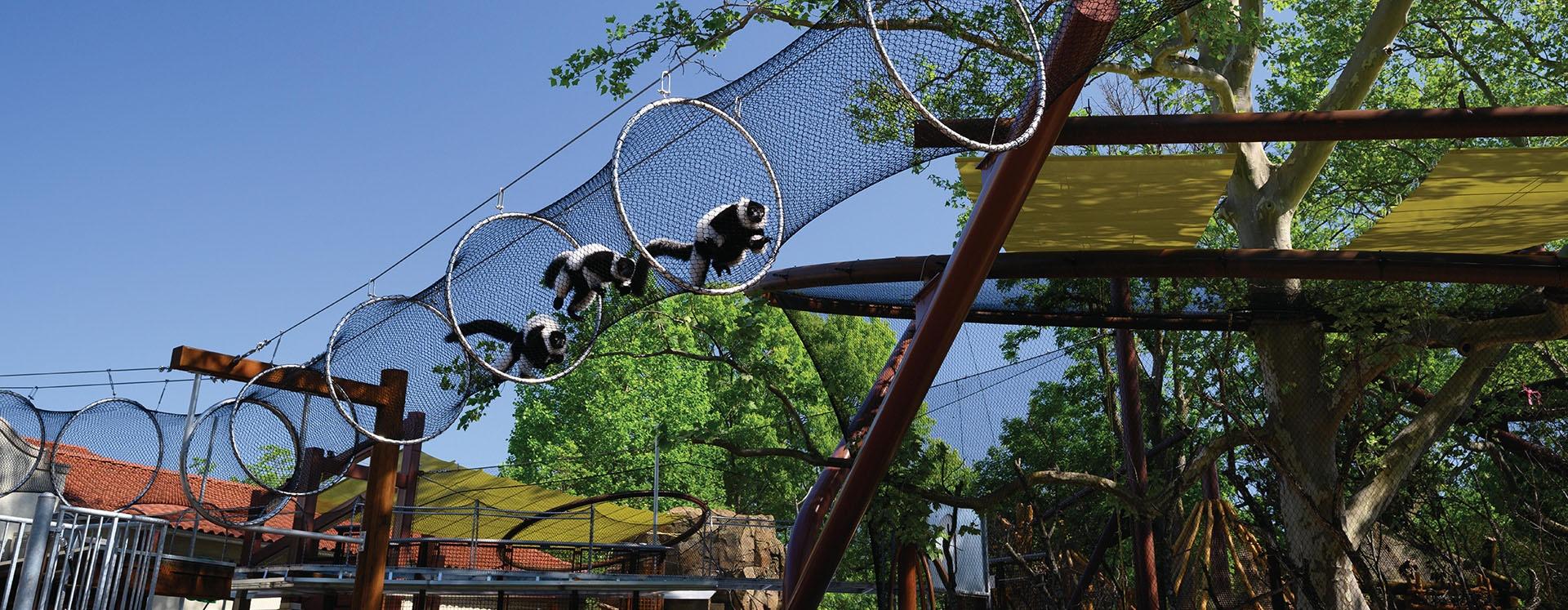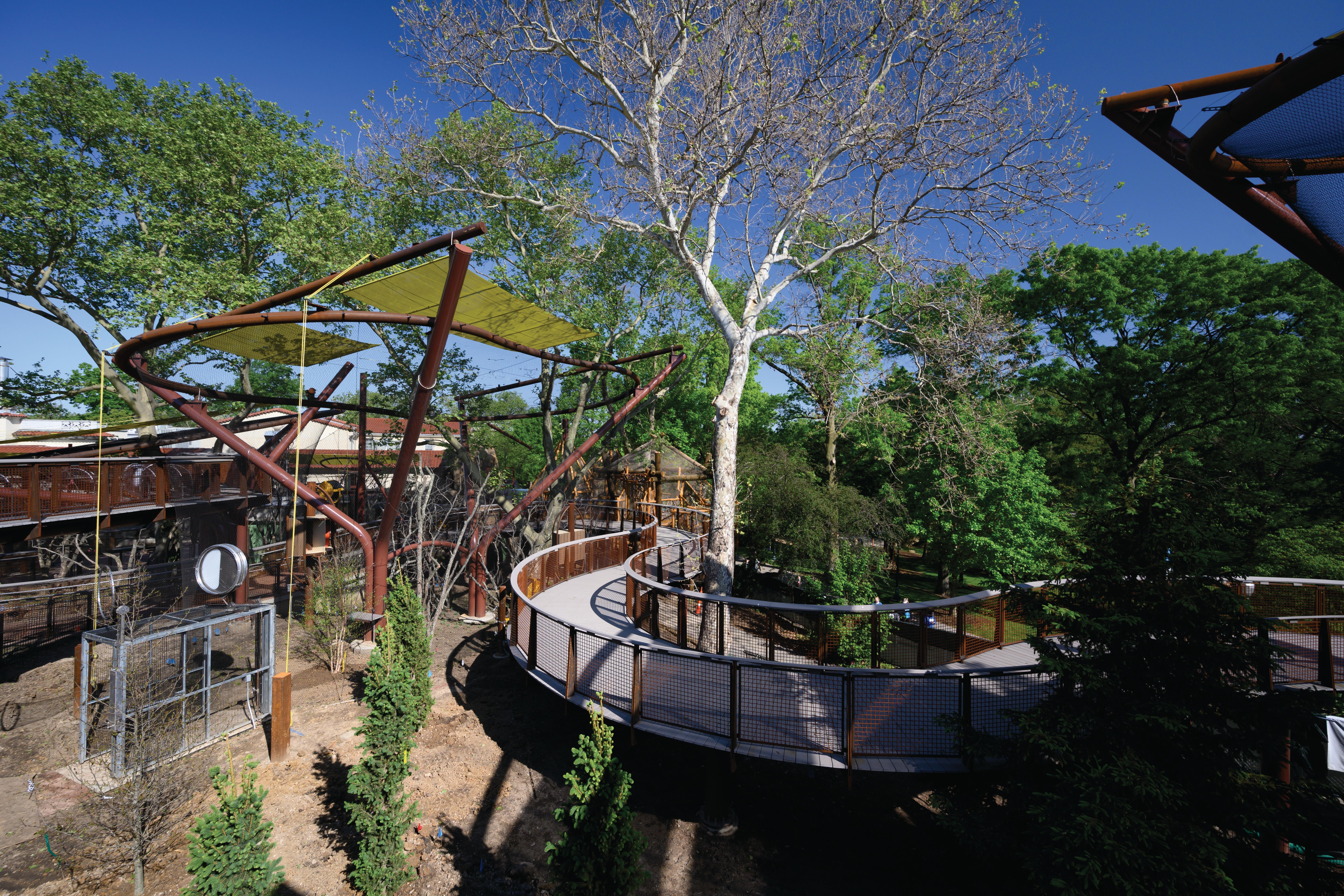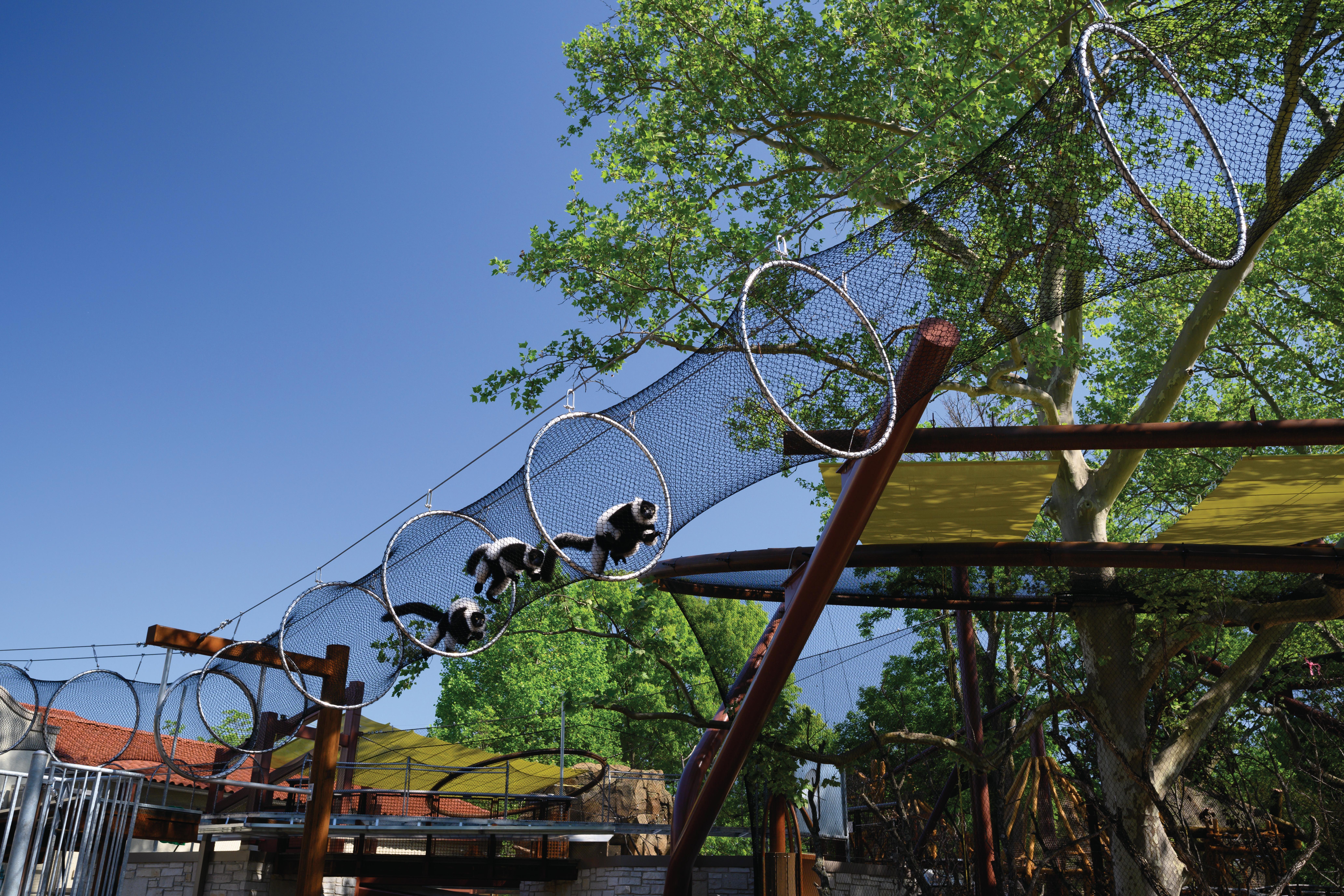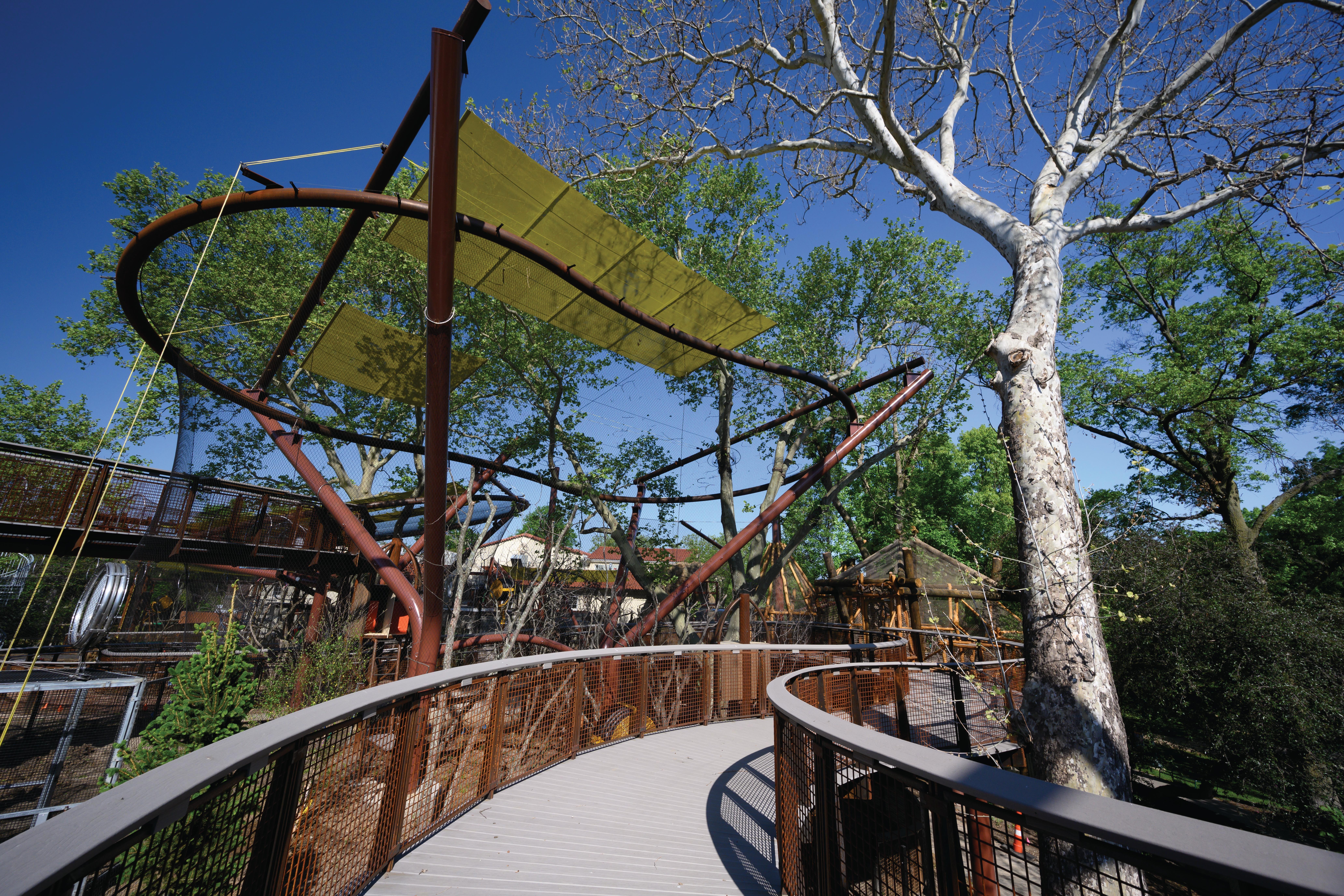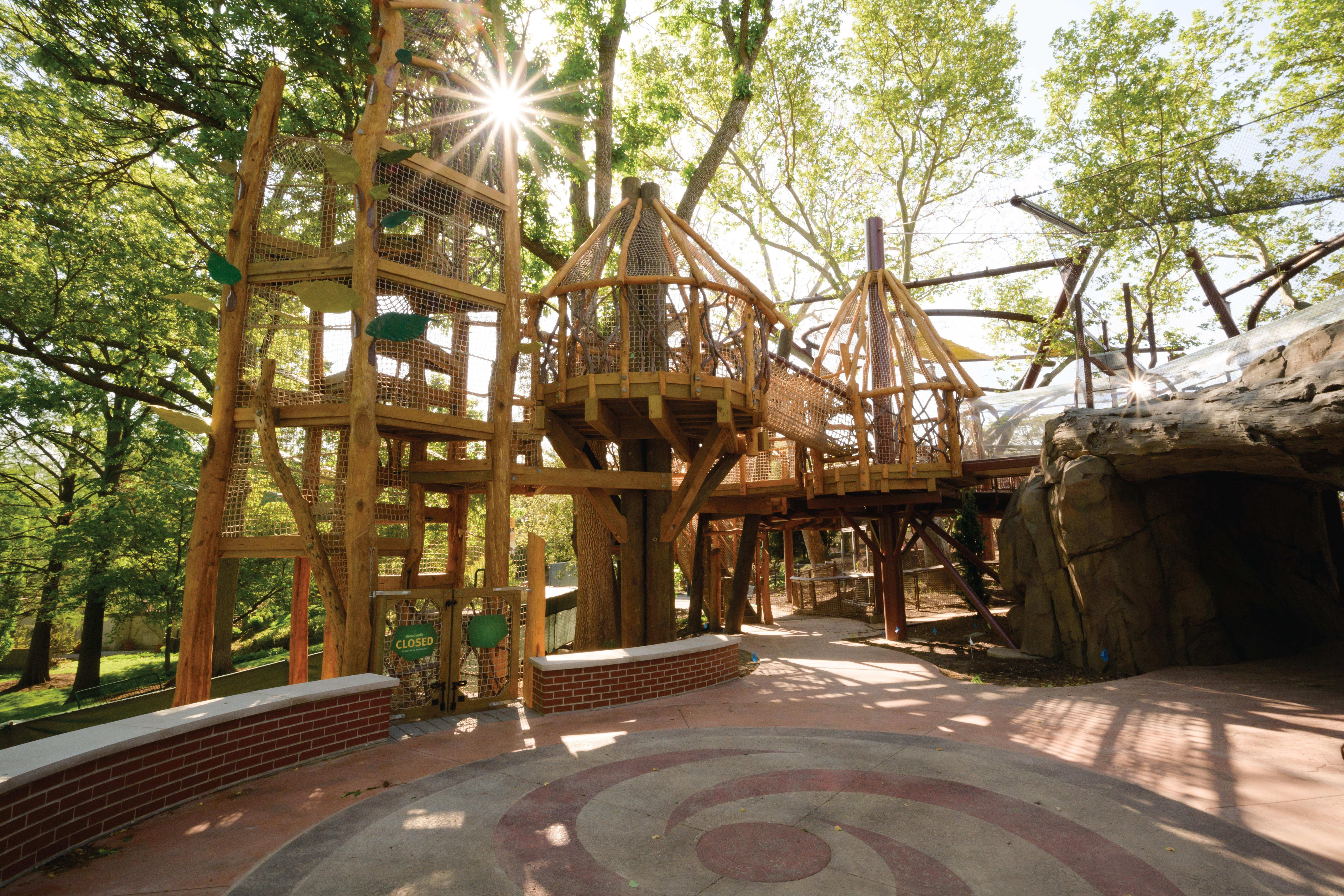Primate Canopy Trails, under construction since late 2019, is a 35,000-square-foot outdoor expansion connected to the Primate House. The $13 million exhibit consists of eight new outdoor homes for primates — lemurs, Old World monkeys and New World monkeys. The first- of-its-kind primate habitat and guest experience includes climbing structures that allow guests to explore the forest canopy next to the animals, while learning through play and exploration about conservation challenges primates are facing in the wild — and discovering solutions to help..
At Primate Canopy Trails, Zoo guests take a journey from the forest floor, through a see-through tunnel, and up into the treetops on an elevated boardwalk to see monkeys and lemurs in their enriching and engaging state-of-the-art homes and play areas. Expansive climbing structures take guests through the animals’ habitats, mimicking the life of a primate in the tree canopy of a forest.
The new exhibit allows the Zoo to improve animal care, health and well-being of primates by providing access to enriching outdoor habitats, sunlight and fresh air. The 1925 Primate House, which was renovated in 1977 and will continue to be used, had few outdoor habitats available for use by only some of the species over the years. Many of the primates living at the Primate House have never had access to the outdoors until now.
“Being outside is critical for primates’ well-being, and this new habitat is a demonstration of the Zoo’s commitment to providing quality animal care,” says Heidi Hellmuth, Curator of Primates, Saint Louis Zoo.
Overhead mesh tunnels connected to the Primate House lead to tall, preexisting live trees and other outdoor habitats with spaces for the animals to climb and perch. These “sky trail” tunnels have a flexible design that allow animals to explore different habitats at different times, boosting the stimulation in their daily lives. On any given day, a group of primates could be in a wide variety of habitats. The exhibit was designed for an estimated 70 different habitat combinations for the various groups of primates to enjoy. The new exhibit also includes a private, climate- controlled Primate Care Center, where the animal care team can provide exceptional care for the animals.
Approximately 40 primates representing 14 species will utilize Primate Canopy Trails and the Primate House. The increased number, size and complexity of habitats allows the Zoo to increase its participation in cooperative conservation breeding programs, as the Zoo will be able to accommodate larger groups as the resident primate families grow.
Animals and Conservation
Animals that can be seen at Primate Canopy Trails and the Primate House include some endangered and critically endangered species:
Lemurs
- Black and white ruffed lemur (critically endangered species)
- Coquerel's sifaka (critically endangered species)
- Mongoose lemur (critically endangered species)
- Ring-tailed lemur (endangered species)
Monkeys
- Allen's swamp monkey
- Black-handed spider monkey (endangered species)
- Cotton-top tamarin (critically endangered species)
- Francois langur (endangered species)
- Geoffroy’s marmoset
- Goeldi's monkey
- Golden lion tamarin (endangered species)
- Guereza colobus monkey
- Spectacled langur (endangered species)
- White-faced saki monkey
“One thing all our primates have in common is their love of the canopies and habitats situated high in the trees,” says Hellmuth. “However, many primates worldwide are threatened with extinction and have declining populations, mostly due to extensive habitat loss, including forests.”
The Zoo is a leader in primate care and conservation. Known for its expertise and experience, the Primate Team is effective and creative at managing groups of primates at the Zoo. The Zoo also participates in Association of Zoos and Aquariums Species Survival Plans for all of the primate species at the Zoo and is a leader in primate conservation work in the wild through the Saint Louis Zoo WildCare Institute.



